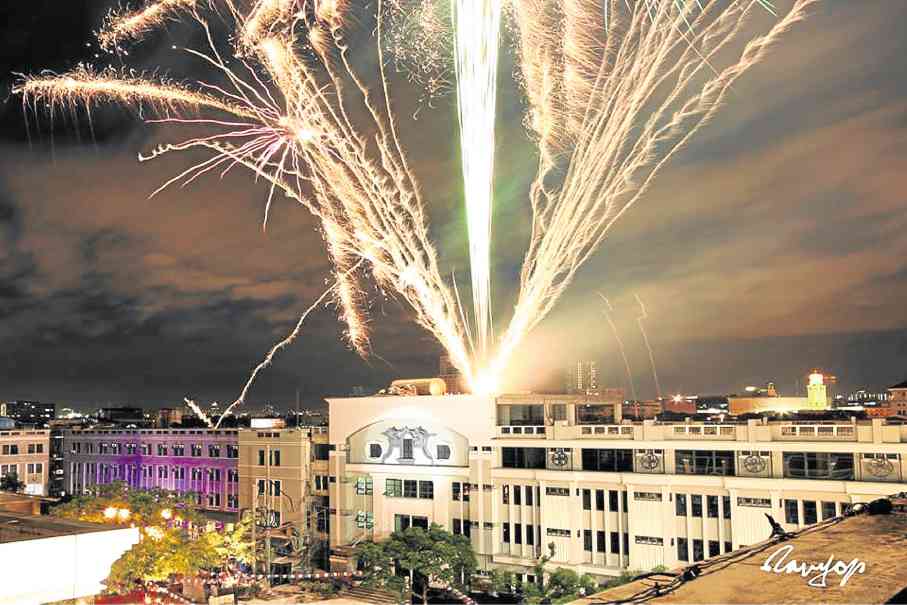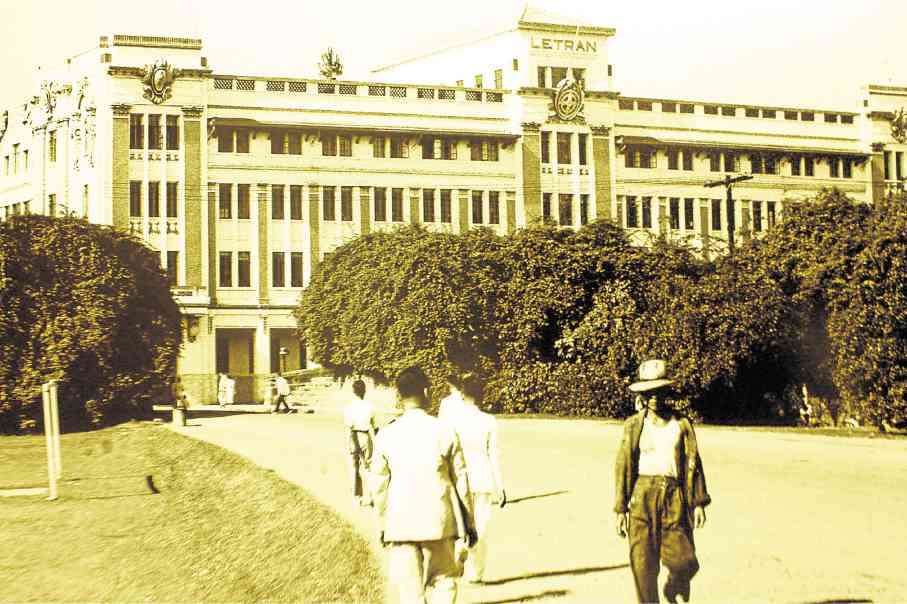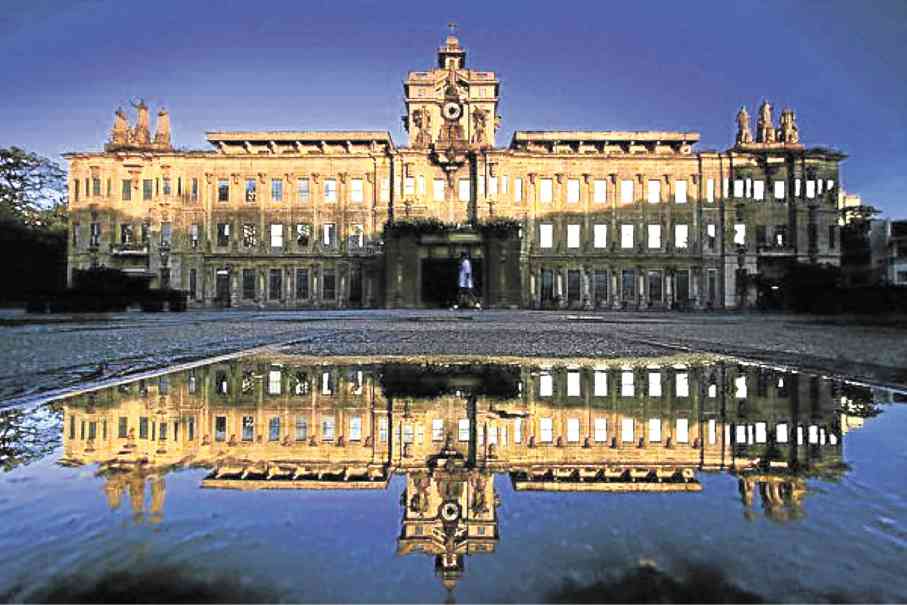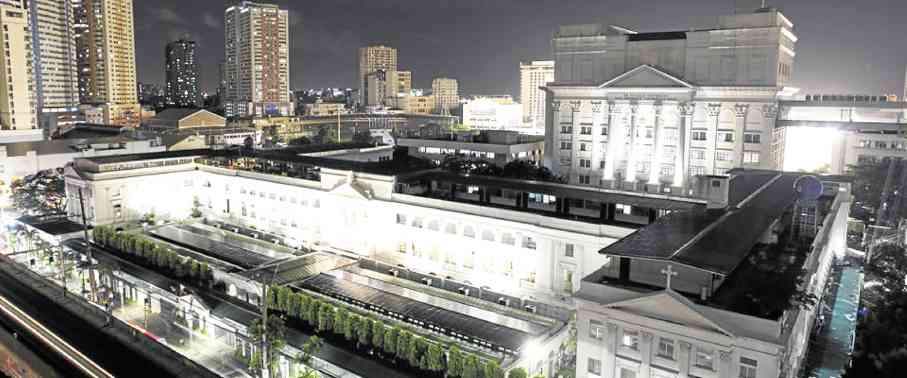Scholars of the past, torchbearers of the future
Colegio de San Juan de Letran
If only the walls of Intramuros could talk and share stories of the past, then the history of Colegio de San Juan de Letran would surely be one interesting tale to hear.
The Colegio was a fusion of two similar institutions, both of which located in the walled City of Intramuros. The first was founded in 1620 by retired Spanish Officer Don Geronimo Guerrero, who transformed his hermitage home into an orphanage called the Colegio de Niños Huerfanos de San Juan de Letran.
It was about the same time when Dominican brother Diego de Santa Maria opened the other institution by the name of Colegio de Huerfanos de San Pedro y San Pablo at the Convent of Sto. Domingo to accommodate young boys under his care while donning a uniform he designed.
Both institutions were created with a purpose to educate and mold orphans into good Christian citizens.
Indeed, the founders of these two institutions with identical origin and purpose did not only share a common concern for the children of Intramuros, but were also linked by the strong bond of friendship.
Thus, it was not at all not surprising that the two institutions were merged into one in 1630 and became known as the Colegio de San Juan de Letran.
The first site was built in 1641 but an earthquake in 1645 destroyed the edifice thus forcing students to temporarily take shelter at the Santo Domingo Convent.
And in 1669, the Dominicans were able to purchase Doña Maria Garcia Pinto’s house and garden which faced the Baluarte de San Gabriel de Dilao.
To this date, the Colegio still stands proudly in that same area and has remained as a silent witness to the numerous hardships and triumphs of individuals who once walked the halls of Letran.
Further expansion meanwhile took place in 1894 as The Colegio started to build modern laboratories and an auditorium. More adjustments were made with the arrival of the Americans in 1900.
With a growing population came the need to build a new edifice to meet the standards of that period, and increase its capacity to accommodate the enrollees of Letran.
In 1937, the new Letran building, with elements inspired by the Bauhaus and Art Deco movement of the 1920s and 1930s, was inaugurated under the supervision of Engineer Alberto Guevarra y Sanchez. One of the prominent features of the said building were its iron-wrought window grills and doors and it imposing façade.
Unfortunately, World War II happened and the building was again damaged, with portions of it heavily burned. It was also during this time when the Japanese Imperial Forces evicted the Dominicans and converted the campus into a garrison. The new building became an unfortunate victim of the Battle of Manila in 1945 but surprisingly it managed to survive and stand the beating.
Letran classes from 1945 to 1946 were again temporarily held at the Domincan Church and Convent in San Juan de Monte just as the Dominicans rebuilt the battered building.
In 1948, the War Damage Commission awarded P795,206.08 to help finance the reconstruction of the Letran building.
And from the ’90s up to the present, Letran further expanded its buildings. Occupying the former Beaterio de Santa Catalina site are the new buildings of Letran while the St. Thomas Hall, St. Albertus Hall, and the Letran Dormitory occupied the former Dominican Compound.
Last year, the new St. Vincent Ferrer Building which was built under the supervision of Carmelo Casas of Casas and Architects, was inaugurated. These new buildings, while reflective of Letran’s architecture from the 1930s, ushered in a new face for The Colegio with its new floorings, newer classrooms, and facilities.
In a span of almost four centuries, The Colegio managed to produce alumnus who became the builders of the Filipino nation. The names Quezon, Osmeña, Mabini, Del Pilar, P. Gomez, Balagtas and Aguinaldo, among many others are enshrined in the hearts of every Filipino.
To date these old and new buildings of Letran serves as silent witnesses to Philippine history as prominent men and women continue to walk its halls. Currently Letran is the lone educational institution in Intramuros that still stands proudly in its original historical site.
University of Sto. Tomas
By Ruth L. Navarra
Stepping into the campus of the University of Santo Tomas (UST) is like stepping back in time.
The most recognizable of all the buildings is the Main Building located at the heart of the campus. The cross on top is visible on all sides of the university. It has been designed by Fr. Roque Ruaño OP and was completed in 1927. It is the first earthquake-resistant building in the country.
It is beautiful inside as it is outside. One can do a Scarlett O’Hara or an Eliza Doolittle at the grand wooden staircase that leads to the Museum. It has two courtyards with grass kept lush and green. It allows air to flow keeping occupants feeling cool even in the hottest summer days.
The building has once been Kilometer Zero of Manila before the point was moved to the Rizal Monument in Luneta Park. Some of its original occupants include the Faculties of Philosophy and Letters, Liberal Arts and Faculty of Medicine and Pharmacy. Those faculties have since moved to their own buildings within the campus.
The Renaissance revival-style, four-floor building houses the UST museum, administrative offices, Faculty of Civil Law, and College of Sciences.
The building stays true to its original aesthetics even with updates to cater to modern needs like air conditioning and overhead projectors. Its exteriors serve as canvas for 3D mapping during “Paskuhan,” an annual Christmas festivity.
But the Main Building is not the oldest structure in the university.
That honor belongs to the Arch of Centuries. It stands proudly at the entrance of the España gate. The half facing the Main Building came from the ruins of the original arch that once stood in Intramuros since the 1600s.
The half facing España Boulevard is a replica of the original arch in Intramuros. The Walled City has once been home to the University before it moved in 1927 to Sampaloc because of its burgeoning student population.
On the pillars of the Arch are plaques honoring two of its most famous alumni Jose Rizal and President Manuel L. Quezon.
Students are welcomed in the university by passing through it during the Freshman Walk. The same students bid farewell to their alma mater four (or more) years later by exiting the Arch during the Baccalaureate Mass.
The Arch’s stories are not all about history. Students have fun creating urban legends around it. One of the most famous legends is that you will be transported to the Spanish era if you cross it at midnight.
The structures are two of the four National Cultural Treasures declared by National Museum in 2010. The other two are the Open Spaces and the Central Seminary.
The home of the Growling Tigers is one of the newest buildings in the campus. The Quadricentennial Pavilion is glass and steel designed by alumni Jose Pedro Recio and Carmelo Casas. It has been in operation since 2012 and boasts of state-of-the-art facilities that athletes could use.
The university has one of the most picturesque landscapes in the country. Wet or dry, its buildings and grounds stay timelessly beautiful. It is an apt venue where young minds can be nurtured to usher them to a bright future.
Ateneo de Manila University
By Vanessa B. Hidalgo
If only walls could talk, then it would probably tell a rich tale of history about the halls of the Ateneo de Manila University.
Before the Ateneo was located in Loyola Heights, Quezon City, its first building was put up at the corner of Arzobispo and Anda streets in Intramuros, Manila. It was then known as Escuela Municipal de Manila.
It was in Oct. 1, 1859 when the governor-general then authorized the Jesuits to take over a small municipal school for 30 children for Spanish residents. In 1865, the Jesuits turned the Escuela into the Ateneo Municipal de Manila.
After a fire ravaged the Intramuros campus, the Ateneo transferred to Padre Faura in 1932. During the Second World War, a single structure remained and that was the statue of St. Joseph and the Child Jesus. During the liberation of Manila, Ateneo remained open and was temporarily transferred in Plaza Guipit in Sampaloc.
In 1946, the Padre Faura campus reopened with Quonset huts as buildings.
Fr. William Masterson, SJ decided to transfer the school to its present location in Quezon City in 1952. The move to the 83-hectare land in Loyola Heights led to the construction of new buildings to accommodate the growing student population. The Padre Faura served as the professional school until its closure in 1976. Ateneo opened the professional school in Salcedo Village in Makati City the year after.
The year 2000 was an eventful year in the Ateneo grounds. The School of Arts and Sciences, which housed the College and Graduate School, was divided into four buildings. They are the School of Humanities, John Gokongwei School of Management, School of Science and Engineering, and School of Social Sciences. Also, the Moro Lorenzo Sports complex was completed in the same year.
The Manny V. Pangilinan School of Leadership was completed in 2006. In the same year, several projects such as the Ricardo Leong Hall to give way for more units of the School of Social Science, the Confucius Institute for Chinese Studies and the Ateneo School of Medicine and Public Health in Ortigas City.
In 2008, the construction of the Rizal Library commenced. The Library is also home to Ateneo Art Gallery which is widely recognized as the first museum of Philippine modern art. Its collection includes postwar artworks by Filipino artists donated to the University by Fernando Zobel de Ayala.
De La Salle University
By Vanessa B. Hidalgo
The original structure of the De La Salle University was built in the district of Paco, Manila by nine brothers from Europe and the United States on June 16, 1911. It housed 425 students in 1921 until the increase in student population made the brothers decide to move to its present location along Taft Avenue.
During World War II, the building was allowed to remain open because it was located in the outer edge of Manila. It served as a shelter for displaced civilians and wounded soldiers. Although repeated bombings severely damaged the building, classes went on and it even absorbed students from other schools which had been closed down.
Darkness fell in the corridors of the building on Feb. 1, 1945 when Japanese forces ordered the school occupants to vacate the building.
But Egbert Xavier Kelly, then president of the College, refused to do so. He went missing the next day and was never found. On Feb. 12 around noontime, 20 Japanese soldiers came to the campus and massacred 16 brothers who were residing there.
After the liberation of Manila, the school gained its foothold and continued growing since. Now, the DLSU campus has 19 buildings (nine classroom buildings and 10 other buildings) spread across the 5.45 hectares of land.
The St. La Salle Hall is a four-storey neoclassical architecture was the first structure in the campus. Designed by Tommy Mapua, the first Filipino registered Architect who also became the founder of Mapua Institute of Technology. The St. La Salle Hall is known to be “DLSU’s most historic building” being the first to house students of the College of Business and Economics. The building is also known to be the only Philippine structure mentioned in the book, 1001 Buildings You Must See Before You die: The World’s Architectural Masterpieces.
Other buildings included the St. Joseph Hall, which was completed in 1956; Velasco Hall, which houses the College of Engineering; and the Don Enrique T. Yuchengco Hall, a nine-storey building that has 20 classrooms and six conference rooms.
In 1980, the College of Career Development was established as a night school for working students. It was called the College of St. Benilde in 1988 and became autonomous in 1994. It is located near the DLSU main building.
The Bro. Andrew Gonzales Hall is the tallest academic building in the country. It stands 21-storeys high, has a total area of 28,000 square meters, and has more than 100 classrooms.
On Dec. 2, 2010, construction of the De La Salle Centennial Hall commenced as part of the University’s Centennial Renewal Plan. The 15-floor building cost P1.4 billion with Henry Sy Sr., chair and founder of SM Corp., donating a total of P300 million to fund the construction. Hence, the building was named after him.
World renowned architectural firm Leandro V. Locsin Partners designed the main concept of the Centennial Hall as a “habitable tree in the middle of a forest clearing.” The interiors were designed by Asuncion-Berenguer Inc. It is the only academic structure to receive the Philippines’ Berde Standard wherein sustainable design is at the core of the building.





